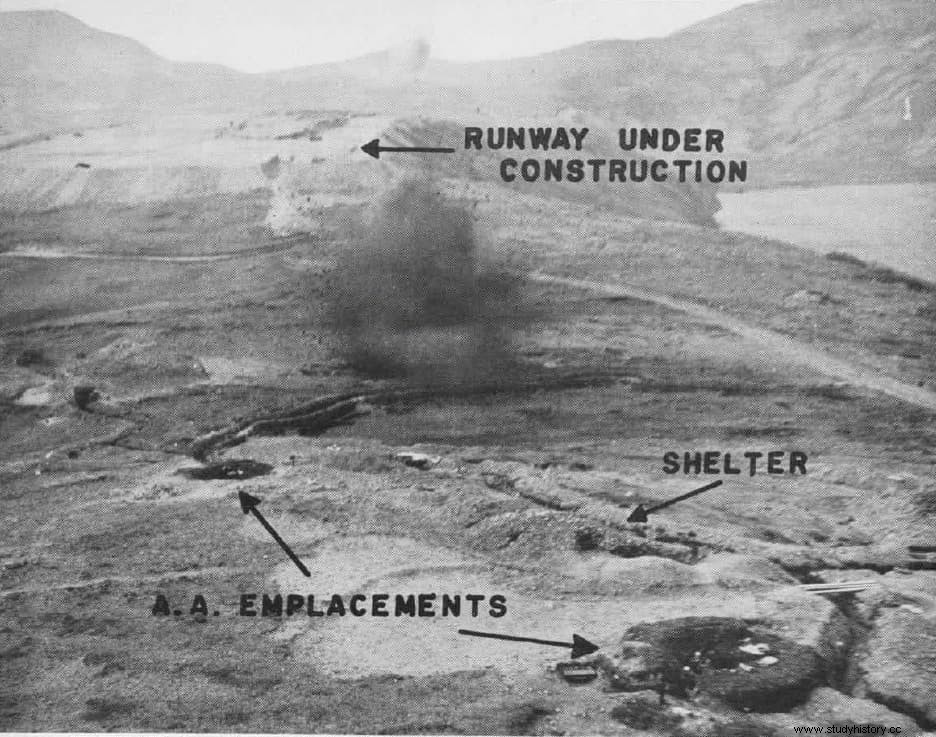Some time ago we told here how the Battle of Attu unfolded, which pitted Americans and Canadians against the Japanese on that island of the Aleutian Archipelago. We explained that, despite its apparent lack of importance, it was actually a place of considerable strategic value, not only because it was a good base for the Japanese from which their aircraft could bomb the United States, but also, and above all, because their high command had decided to take the Midway Islands -a large natural aircraft carrier in the middle of the Pacific Ocean- and for that they needed a diversionary maneuver that would drive the US Navy away.
Therefore, on June 3, 1942, a squadron consisting of the aircraft carriers Ryujo and June , the heavy cruisers Maya and Takao , battleships Ise, Fuso and Yamashiro and the light cruiser Abukumase began the bombardment of the most important of those three hundred islands that make up the Aleutians for two days after disembarking in Kiska and the following day in Attu. There was hardly any resistance because the US had never given them importance. Now things had changed and they had to be recovered somehow.

In August the first American bombs began to fall on Japanese positions on Adak Island; a few months later these were completely cut off when Rear Admiral McMorris defeated Vice Admiral Boshirō Hosogaya at the Battle of the Komandorski Islands, thus cutting off the supply route. On May 11, Operation Landcrab (Crab) began, the disembarkation, which little by little and under difficult environmental conditions was gaining ground on the defenders, who, seeing that they would not receive help and ran out of ammunition, launched into a suicide attack. Almost all of them died, including his colonel, Yasuyo Yamasaki.
Attu had been recaptured but Kiska was missing, occupied almost a year before by half a thousand marines led by Captain Takeji Ono; very easily because there was only one weather station defended by a dozen soldiers. It is curious to note that the commanding non-commissioned officer, William C. House, escaped and remained hidden in dire conditions for almost two months until hunger -he only ate plants and worms- and cold -after all, it is the Polar Circle Arctic - forced him to surrender; at that time he weighed no more than thirty-six kilos.

The fact is that the tables were turned and, given the fall of Attu and the impossibility of resisting in isolation, the Japanese troops commanded by Kiichiro Higuchi were evacuated from Kiska. In addition, the capture of Midway had totally failed and the designer of the plan, Admiral Yamamoto, had just lost his life when the plane he was traveling in was shot down, so the last nine men left on July 28, 1943, under cover. of a dense fog, leaving the island empty. All this without the enemy noticing.
In fact, a B-24 Liberator plane that flew over the position on an inspection mission detected the enemy ships, although without being able to identify that they were removing the troops from there, so that the force destined for the reconquest, made up of various units of the US 7th Infantry Division and the 13th Infantry Brigade of the 6th Canadian Division, expected strong resistance.

Thus, Operation Cottage, as the campaign to recover Kiska was called, already had its initial dose of grotesque with two weeks of bombing on a completely empty site without apparently anyone knowing how to adequately assess why the anti-aircraft guns, active until then, they now maintained a deathly silence.
But the thing continued later, when the disembarkation took place. It was on August 15 and it was done from two opposite points of the island coast, each one assigned to a nationality; Obviously there was no opposition but there was, once again, a curtain of fog that would remain for two days, generating enormous confusion in the development of the operation. These adverse weather conditions caused the Americans and Canadians to face each other, respectively being confused with the enemy, shooting each other to the point that twenty-eight deaths were recorded among the former and four among the latter, in addition to many wounded.

In the end the total casualties of Operation Cottage numbered three hundred and thirteen, of which ninety-two were fatal. The number increased because if there were no enemies on the ground beyond some hungry dogs (among them Explosion , the mascot of the previous North American garrison, which the Japanese had taken care of all that time), at sea things were different.
But not because of the various battles that took place around Kiska between the US Navy and the Imperial Japanese Navy, since they all ended with victories in the former without too much difficulty, the only adversity being the sinking of the USS Grunion in the summer of 1942 due to a torpedo… of its own, which after firing at a freighter turned around in a fateful circular trajectory.

The real misfortune occurred aboard the USS Abner Read , a Fletcher-class destroyer that had taken part in the shelling of Attu and later repeated at Kiska. Patrolling her waters on the night of August 17, a strong explosion, presumably due to the collision with a mine, tore off the stern and sent it sinking, causing seventy deaths and forty-seven missing persons. The ship was later able to be refloated and was sent to Washington for repairs; she still had time to fight, the following year, in some minor actions in New Guinea and even indirectly in the Leyte Gulf, where she was definitively sunk by a kamikaze attack. .
This was the story of a bizarre battle in which we could say, half jokingly, half seriously, that the Japanese defended a position and caused casualties to the enemy without having to have soldiers or fire a single shot. Sometimes, as Clemenceau said, war is too serious a matter to be left to the military.
